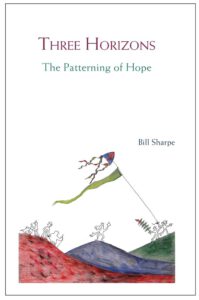The rest will follow
One of the things we would like to see in an improved curriculum is room for financial literacy. Financial and economic literacy can go hand in hand with discussion of the economics sectors that are related to the social foundation.
The social foundation offers ample possibilities to connect financial and economic literacy, like health, education, food, water, energy and housing. These elements correspond with economic sectors in which students engage now, and will engage more when they take the next step in their lives and have responsibility for their own household budget. That is how we came up with the idea of a series of lessons called ‘Know Your Economy’.
As it turns out, these down to earth lessons allow for many interesting connections. I am, for example, at the moment in the process of writing a series of lessons on the concept of water, which I started with a Know Your Economy lesson on the water supply. While writing this lesson, it struck me that this topic lends itself for a series of lessons with a variety of perspectives.
For starters, when the average water consumption in the Netherlands came up, it raised the question what to compare this with. How does my water usage compare to the national average? How does the national average compare to the averages of other countries?
However, average water consumption numbers provided by water supply companies or the water board relate in general to direct consumption only. But when we compare water consumption, we have to compare indirect water consumption, also called virtual water consumption, too. The virtual water content of a product is the amount of water required to produce a good, considering all the steps involved in its production.
This brings up the topic of virtual water trade. Europe is a net importer of virtual water, which should be reflected in the trade balance of European countries. By this I do not mean that the virtual water trade should be an entry on the trade balance, but there are industries that are more water intensive than others, so I would expect a negative virtual trade balance (import > export) in these industries.
Does the comparison of direct and indirect water consumption in itself allow for an interesting lesson, we should not fail to take availability into account. Since freshwater is a finite resource, there is a limit. An increase in water stressed regions brings this point across loud and clear. This calls for a basic understanding of the water cycle and how human activity is deflecting it for its own purposes. Water is a primary need, and since economics is the study of the problem of scarcity – where there are various needs and finite resources, water is the subject matter par excellence of economics. This, for me, is the main reason not to shy away from basic knowledge about ecological systems.
The finiteness of water raises the question of our dependence on water. What industries depend on freshwater resources? What jobs? I do not have to explain that the livelihoods of all people depend on access to water, but how many jobs depend on it? What happens to jobs in the region when the extraction of all water from the Aral sea does not allow for cotton production anymore? Will there be other jobs or do people have to move somewhere else to make a living? This regional finiteness of water resources is more often than not aggravated by virtual water trade and climate change. This raises the – geopolitical – question what the future might bring with regard to migration and trade flows. Will water stressed regions see an outflow of people or will local water management boards change their policies? And how will this affect the net-importers of virtual water?
Availability of water also brings up another point: about 2.2 million people in the world do not have access to freshwater now ((WHO/UNICEF 2019)). Only a small percentage of this number live in developed countries, and their lack of access to water is generally due to defaulting on their water bills – usually a sign of relative poverty. The water supply in a country like the Netherlands or Belgium is not necessarily a solution for countries with a lower density in population or in countries with rougher terrain. In many countries the amount of resources needed to have a similar water supply infrastructure as in these densely, even in rural areas, populated countries, stands in sharp contrast. Therefore it is mostly the people in rural areas that are left out. Since one of the SDGs is clean water and sanitation for all, there is still work to be done to achieve this goal.
Students should understand the basic difficulties in the supply of water in different circumstances and how to cope with these difficulties. I believe this contributes to their resilience, equanimity and resourcefulness.
henny@21steconomics.org – You can also find me on LinkedIn
Image by Manfred Richter from Pixabay




